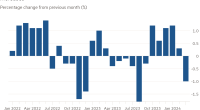Maybe you watched, cringing, as someone rushed to the bathroom to hurl in a fitness class—maybe you’ve been that someone. But is throwing up after a workout just a good sign you were working hard? No matter what drove you to nausea mid-burpee, whether an instructor pushed you to go harder or you wanted to gain a competitive edge, know this: It’s not a badge of honor to hurl breakfast in the middle of class.
It’s uncomfortable and confusing—not to mention, it can take you temporarily (or entirely) out of the game.
But why are you feeling like throwing up during or after a workout in the first place? And what can you do to prevent a workout vom sesh in the future? Here’s what health and fitness experts say about what it could mean.
Experts In This Article
- Heather Milton, MS, RCEP, CSCS, exercise physiologist at NYU Langone’s Sports Performance Center
- Natasha Ahmed, MD, family and sports medicine physician at RUSH University Medical Center and assistant professor at RUSH Medical College
What’s happening internally when you feel nauseous
The sensation of nausea, with or without exercise, is linked to the gut-brain axis, which is essentially a pathway for information to travel from your gut to your brain and vise versa along the nervous system, says Natasha Ahmed, MD, a family and sports medicine physician at RUSH University Medical Center and assistant professor at RUSH Medical College.
Stimuli of any kind, whether from food, medication, dehydration, or an illness, are picked up by receptors in the gut that send signals to the brain to determine what comes next. Sometimes, that answer is nausea, explains Dr. Ahmed.
Other things that can up your risk of nausea: preexisting conditions, especially those that impact the gut or digestive tract; some neurological conditions, including migraine; and inner-ear issues like vertigo.
Some gut triggers can elicit an immune response, such as when you’re sick, adds Dr. Ahmed. “Any time there’s an immune response, there’s [also] an inflammatory response, and inflammation can precipitate the nausea,” she says.
Why exercise can induce nausea or vomiting
With all these potential triggers and information gathering happening in your gut and brain, adding exercise to the mix can sometimes send your nervous system into overdrive. The mechanisms that cause nausea or even vomiting during or after a workout aren’t always the same nor clear, but some commonalities could be at play.
Lactic acidosis
This is a fancy way of saying you have an excessive build-up of lactic acid, a waste product of exercise, in the bloodstream. Some of the most common symptoms of lactic acidosis are nausea and vomiting, according to the Cleveland Clinic, so this is one possible reason why you feel like throwing up after a workout.
This tends to occur during strenuous exercise, says Heather Milton, MS, CSCS, exercise physiologist at NYU Langone’s Sports Performance Center.
“When lactic acid is produced at a faster rate than your body can clear it, it will accumulate, and your body will try to rid itself [through vomiting] of the acidic environment to find homeostasis,” says Milton.
Lactic acidosis is dangerous, as it can affect your organs, so take this as a sign you’ve pushed yourself too hard.
Mechanical forces
Certain exercises or body positions could make you nauseous during exercise, such as inversions (e.g. yoga headstands), sprints, or burpees, says Milton. You may also be “sensitive to changes in position—the up and down motion of the stomach, especially full of fluid, can lead to discomfort,” she says.
Exercises or workouts that cause intra-abdominal pressure, such as bending over a stationary bike or doing core movements that fold or crunch the stomach, could also spur nausea, adds Dr. Ahmed.
Heartburn
“Exercise can induce acid reflux even if you don’t typically experience heartburn,” says Dr. Ahmed. While it can happen during any type of workout, HIIT classes where you’re jumping or bounding may cause stomach acids to rise to the esophagus causing heartburn. Then, the backflow of that acid can irritate the lining of the gut, causing nausea, she explains.
Altered blood flow
Blood flow to the gut decreases during exercise to prioritize blood flow to the working muscles and brain, says Dr. Ahmed. This is expected and normal, and the altered blood flow will increase with longer and harder workouts.
That said, if you had a heavy or large meal too close before your workout, the lack of blood flowing in the gut can stymie digestion, causing discomfort, delayed gastric emptying, nausea, and other GI distress, she says.
Dehydration or electrolyte imbalance
Too much caffeine, inadequate water intake throughout the day, or excessive sweating during a workout can all lead to dehydration, says Milton. And both dehydration and an over intake of electrolytes when your body doesn’t need it (think a mid-afternoon sports drink devoid of any exercise) can cause GI symptoms, she says.
Rarely, something called exercise-induced hyponatremia, a rapid decrease in sodium (also an electrolyte), can occur—most often in marathoners or ultra-long distance runners, due to the intensity and duration of the exercise and sweat loss, says Milton.
Intense exercise
Tough workouts like HIIT or boot-camp style classes have become popular for good reason: The mix of cardio and strength-training is an efficient workout that elevates your heart rate, improves your anaerobic fitness, and burns calories even after the workout. But you can have too much of a good thing.
Many of the catalysts for why you can feel like throwing up after a workout are correlated with the duration and intensity of the exercise.
“Tough workouts require up to 72 hours to recover from because they are physiologically and neuromuscularly taxing,” says Milton. Doing HIIT every day or without time for adequate rest makes it “no longer beneficial to your body and can potentially harm it.”
How you can avoid throwing up after a workout
If you experience sudden nausea during a workout that’s coupled with other troubling red flags, such as blood in your vomit or chest pain, seek medical attention immediately. These could be signs of a heart attack or other cardiac episode, says Dr. Ahmed.
Seek medical attention immediately for sudden nausea during a workout that’s coupled with other troubling red flags, such as blood in your vomit or chest pain.
Feeling like throwing up after a low-intensity workout or without any reasonable explanation for the nausea may also be troubling, and you’ll want to visit a doctor, adds Milton.
Otherwise, sporadic nausea during exercise that can likely be attributed to any of the above factors isn’t cause for any major health concern, but it is frustrating—and who wants to be the person who throws up in a crowded studio class, right? Here’s what you can do to prevent it next time.
Focus on hydration
A general “rule of thumb is to have up to 12 ounces [of fluid] every 20 minutes of exercise and 16 to 20 ounces every hour for the following 3 hours,” says Milton. It’s helpful to aim for good hydration habits throughout the day, so you aren’t chugging a ton of water right before going into a workout, as all that liquid can upset the stomach as well.
If you’re a runner, be mindful to avoid overcompensating with too much plain water intake, as that could dilute the sodium in your body. Instead, opt for a balance of electrolyte drinks and H2O during and after exercise, she says.
Consider your eating habits
Avoid heavy or large meals within two hours of exercise, recommends Milton. Before a workout, you want to emphasize foods that allow for easy digestion.
“If you had a heavy meal or a high-fiber meal before exercise, the gut is still trying to process it, and the lack of blood flow can exacerbate symptoms,” she says. You’ll also want to avoid foods known to cause heartburn including spicy, high-fat, or fried foods.
Look to medications
If acid reflux is the cause of you feeling like throwing up during a workout, talk to your doctor about trying a PPI (proton pump inhibitor), a common over-the-counter medication to suppress stomach acid, says Dr. Ahmed.
On the flipside, some medications may cause nausea when not taken with food, so be mindful of when and how you’re taking routine meds (or supplements).
Lastly, if you’re treating your post-workout muscle soreness with NSAIDs (non-steroidal anti-inflammatory drugs), such as ibuprofen, these can irritate the stomach lining and lead to nausea, adds Dr. Ahmed. So, try Tylenol (acetaminophen) instead.
Never forget about recovery
If you love long runs on the weekend or HIIT classes with your favorite instructor, keep them up. Just don’t neglect the rest days in between and other key recovery strategies after those tough sprints.
“Maximizing recovery including hydration, sleep, and fueling after is the best way to achieve your desired results,” says Milton.
Source: Well and Good









